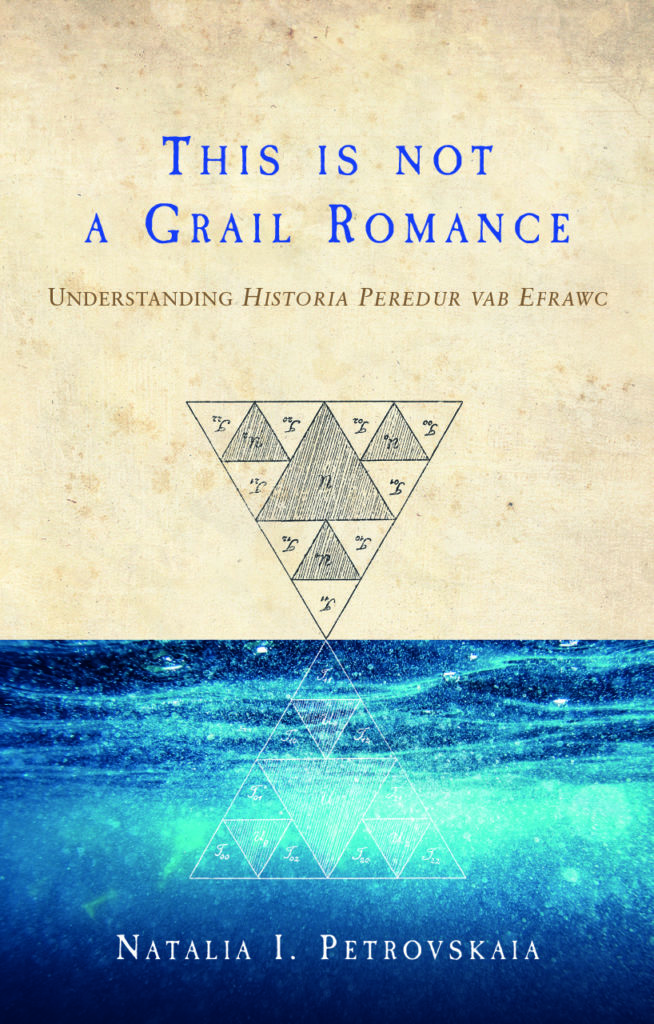
Natalia I. Petrovskaia introduces her book, This is Not a Grail Romance: Understanding Historia Peredur Vab Efrawc.
Writing This is Not a Grail Romance has been something of a voyage of discovery. The book started with a realisation, during a rather long lockdown evening, that I have been working on the medieval Welsh narrative Historia Peredur vab Efrawc (‘History of Peredur son of Efrawc’) on and off for almost two decades, and I still wasn’t quite sure I understood the story as well as I should. The narrative as we have it – as it was printed in the edition by Glenys Goetinck (University of Wales Press, 1976), and in the various translations of the collection now known as the Mabinogion, most recently by Sioned Davies (Oxford University Press, 2007) is something of a mystery. There are four medieval Welsh manuscripts containing what seem to be two or three versions of it; we don’t know when it was composed or by whom (or even if it was by one person); and the storyline seems chaotic at best. It’s part of what is known as the ‘grail’ family of stories (Peredur is the same character as Sir Perceval in the French and English versions), but at the scene where the Grail should appear the procession comes in carrying a head instead. It is also full of tantalising detail suggestive of other stories that we might have lost.
Let me give you an example. Peredur’s own journey to knighthood begins as a young boy who had been brought up in the middle of nowhere. While hunting he meets three knights on the road, who question him, and whom he questions in his turn – he has never seen a knight and wants to know what everything is! The encounter is crucial to the plot as it is meeting these knights that makes him want to set out and become one in the first place. We don’t learn very much about the knights he meets except their names, and the fact that they are following a knight who had been giving out apples at the court of Arthur. We are not told anything else about that mysterious knight, or whether they caught up with him in the end, or what was wrong with the apples!
In the course of writing the book I tried to go some way to solving some of the mysteries, not just of the knight of the apples, or the absent Grail, but also about the seeming inconsistencies in the tale itself. The answer to the latter mystery turned out to be both delightfully simple and extremely complex. The simple answer is that we have three separate stories about Peredur surviving, which now come under one heading, as Historia Peredur vab Efrawc. The more complex answer is that the three stories are part of, and also hold within them, a complex structural pattern, which attests to incredible artistic, creational and also mnemonic virtuosity on the part of the medieval Welsh storytellers. The extended version of this complex answer is found in the book.
Natalia I. Petrovskaia is Assistant Professor in Celtic at Utrecht University.


